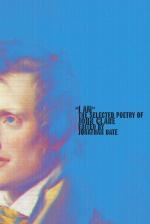|
This section contains 6,145 words (approx. 21 pages at 300 words per page) |

|
SOURCE: "A Molehill for Parnassus: John Clare and Prospect Poetry," in University of Toronto Quarterly, Vol. XLVIII, No. 1, Fall, 1978, pp. 23-40.
In the following excerpt, Brownlow contends that Clare and his detailed view of nature were unique in that he refused to view the landscape with condescension as the "topographical poets" did, nor did he attach human spirituality to nature as did the Romantic poets.
I
Topographical poetry in the wide sense is as old as poetry itself, for poets have always felt the need to celebrate their environment, thereby giving their emotions 'a local habitation and a name.' Drayton's Poly-Olbion and Jonson's To Penshurst are important poems in this tradition. But the publication in 1642 of Sir John Denham's Cooper's Hill inaugurated a special type of topographical poem, the hill- or prospect-poem, which had its full flowering in the eighteenth century and which was, in its decline...
|
This section contains 6,145 words (approx. 21 pages at 300 words per page) |

|


